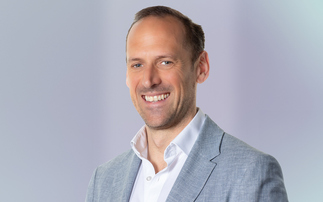Key points
At a glance
- Since 2015 Dutch schemes have been legally required to report on their costs under a framework to the regulator
- Data shows the average total cost of ownership per scheme fell from 1.3% in 2015 to 0.8% in 2016
- The relationship between Dutch schemes and asset managers has become more open and balanced
Schemes in the Netherlands saw investment costs fall by more than a third in just one year under its compulsory cost reporting framework, according to research. Stephanie Baxter explores the data and speaks to a Dutch scheme CIO
As the UK edges closer towards a standardised cost disclosure template, the experience of Dutch pension funds gives some insight into the future for UK schemes.
The Financial Assessment Framework (FTK) for cost reporting has been a recommended practice by the Dutch trade body, PensioenFederatie, for around seven years, but since 2015, schemes have been legally required to report on their costs under the FTK to the regulator - DeNederlandscheBank (DNB). The framework has enabled pension funds to evaluate and break down the total costs, including transaction costs, associated with running a scheme.
New analysis by KAS Bank, shared exclusively with PP, shows how costs came down just one year after the regime became mandatory.
Cost efficiencies
The custodian bank compared the costs of its Dutch pension clients in 2015 and 2016 under the FTK regime, and found the average total cost of ownership per scheme (including all investment costs and pension management costs) as a percentage of assets under management (AuM) dropped by more than a third from 1.3% in 2015 to 0.8% in 2016. Meanwhile, the total average cost fell from 62.7 basis points (bps) to 55.1bps.
The analysis gives a good indication of the wider market as KAS Bank's clients account for around a third of the country's pensions sector. The data looks at 50 Dutch defined benefit (DB) pension fund clients in 2015 with a total of £74.7bn AuM, and 68 DB clients with £120.1bn AuM in 2016.
The average pension management cost per scheme (including advisory and administration) fell from 0.3% to 0.2%. But the biggest fall was in investment costs where the average cost per scheme fell from 0.96% to 0.6% - mostly attributed to lower transaction costs and performance costs. The bank's analysis found that 41% of the overall investment costs came from fixed income, 20% from equities, and 15% from alternatives. The average asset allocation split across Dutch pension funds in 2016 was 32% equities, 54% bonds, and 14% other, according to a separate Willis Towers Watson report.
Average investment costs fell from 47.8bps to 41bps, driven by transaction costs dropping from 11.2bps to 9.2bps, management costs from 24bps to 22.5bps, while performance costs went from 5.7bps to 2.2bps.
"That transaction cost piece is what has really added value in the Netherlands, in adopting the FTK reporting regime," says KAS Bank product specialist for cost transparency and benchmarking Scott Foster.
"By having access to this information and making sense of it, they can have not only internal discussions within their governance committees and investment teams, but it also enables communications with members in reporting on costs as well as engaging conversations with existing asset managers as to what is being invested and why, and why certain costs are at the levels they are."
Given reporting has only been mandatory since 2015, KAS Bank could not provide data from prior years. However, analysis published in February by the Dutch Fund and Asset Management Association (DUFAS) broadly shows a trend of falling costs since the FTK reporting came into being. Average investment costs for schemes with AuM less than €1bn (£0.9bn) gradually dropped from 0.5% in 2012 to 0.4% in 2016, and from 0.6% to 0.5% for schemes with between €1bn and €5bn AuM.
Interestingly, investment costs among larger schemes, with AuM over €5bn, have barely changed over the period - they were 0.49% in 2012 and 0.48% in 2016.
While cost transparency is undoubtedly having an impact, consolidation is also playing a part in helping schemes to use their increased scale to drive efficiencies. The Dutch pension market has reduced from 454 schemes in 2011 to 297 in 2016, and 268 in 2017.
In 2007, PensioenFederatie and the Netherlands Authority for the Financial Markets sought to develop the FTK cost reporting framework as there was no full understanding of the total cost of ownership of pension funds.
Better decisions
Stitching Pensioenfonds TNO says now the regulator is reporting all the different cost levels, "the sector is more transparent and it's easier to compare our cost levels with various other pension schemes".
The €1.2bn Telegraafpensioenfonds - which manages pensions for newspaper publisher Telegraaf Media Groep - has been able to weed out unnecessarily expensive managers. Once the pension fund has detailed cost reporting for all asset managers in an asset class, it confronts the most expensive one and keeps them accountable.
Speaking to PP, chief investment officer Frank Huitema, says: "Based on the data we received, we were able to form a picture of the more expensive managers and the more efficient managers. We were able to plot the data against how managers perform, and in the end, it helped us to make more informed decisions on whether to retain or remove certain managers.
"We say to them, ‘you're incurring significant costs in these areas and you're not making up for it in terms of better performance compared to your peers - so either you run the risk of us letting you go, or you must compensate us for the inefficiencies within your own organisation by discounting more on the management fee'. We look at the overall cost level - not just the pure management fee - and say that it has to be comparable to what the manager's peers are charging."
Some asset classes tend to incur higher costs, such as emerging market equities and high yield bonds which are more expensive to manage than developed and investment grade.
Transaction costs
While reporting management fees and other recurring investment costs is straightforward, transaction costs reporting has been more challenging.
When Telegraafpensioenfonds started to ask for the data a number of years ago, many asset managers were not used to reporting those transaction costs, and so were unable to explain why costs were so high or so low. Over the years, as managers have grown accustomed to it, reporting has become more reliable.
Huitema says making the FTK mandatory in 2015 once the market had become use to it, has helped pension funds to focus a lot more on costs.
"In the earlier years of adopting the FTK, there were huge differences between pension funds with fairly similar investment portfolios, and there was a lot of pressure on the more expensive funds to justify their high-cost base even though they were not investing heavily in expensive things like private equity."
The FTK has also helped Telegraafpensioenfonds to better understand the ability of asset managers to control transaction costs.
"We found that some managers are significantly better able to control their transaction costs than others," says Huitema. "Some use their trading desks as profit centres, which gives them an incentive to flip their portfolios quite frequently. Other managers have a stronger client focus in their investment approach - so they carefully balance the transaction costs when it comes to creating turnover in their portfolios.
"Some larger investment managers can profit from having a market-making function in certain assets, which means they can often trade very close to the mid-point, while other houses can get significant costs from having to trade at the buy or sell price."
Some managers deliberately game their results, says Huitema. For example, they tend to shift costs from the management fee to other recurring costs, or the other way around.
"A lot of clients push for lower management fees but other ordinary costs don't tend to be discounted in any way - so managers shifting costs from the management fee to other costs can protect their gross margin."
The relationship between Dutch pension funds and asset managers has clearly become more open and balanced. On the whole, Huitema believes under the cost reporting framework, the "balance of power has moved a bit in our favour".
"As the UK Financial Conduct Authority's asset management study showed, managers are typically very profitable, which suggests most of their customers have little negotiating power. Having detailed cost information helps to better evaluate managers and have stronger negotiation powers."
The UK is taking a similar approach to the Dutch. The Financial Conduct Authority's Institutional Disclosure Working Group (IDWG) has put together five cost disclosure templates for the wider pensions sector, which the watchdog will publish for voluntary usage in the autumn.








